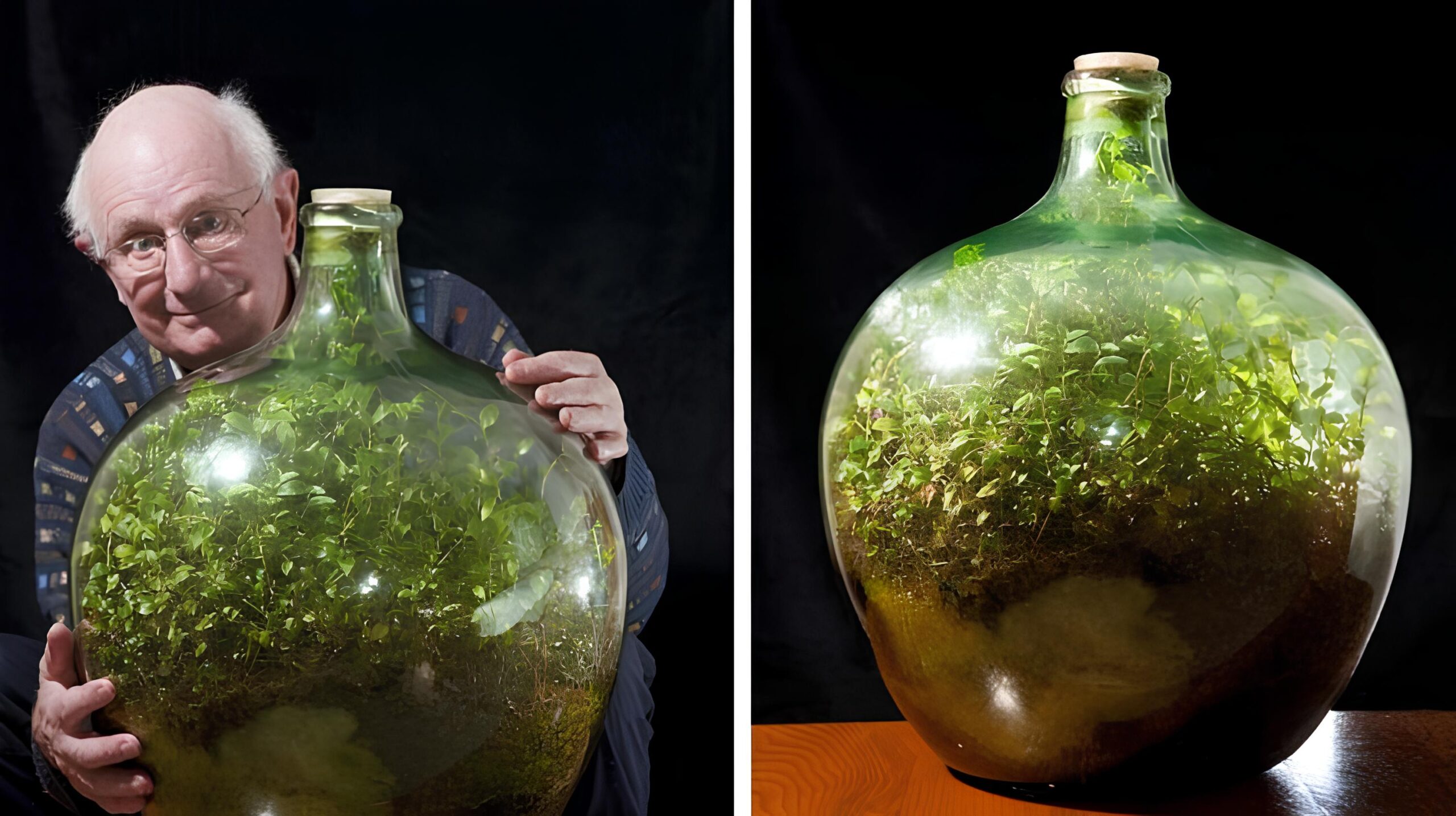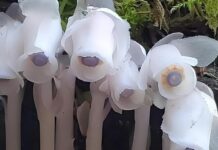On Easter Sunday 1960, David Latimer placed a seed in a glass vial with little notion that it would develop into an expanse of greenery that would remain unspoiled for decades. Despite the fact that Latimer last irrigated it in 1972, the sealed bottle garden is still growing as furiously as ever, completely filling the bottle with luxuriant plant life.

Latimer delicately lowered a spiderwort seedling into the mix after pouring some compost into the globular bottle, followed by a pint of water. The bottle was sealed and put in a light location, and the miracle of photosynthesis began. Except for a single watering in 1972, the bottle garden was completely cut off from fresh water and air, but it still managed to form its own self-sufficient ecosystem. Photosynthesis is the process through which plants receive the energy they need to develop. The process also generates oxygen and moisture in the air, which collects within the bottle and “rains” back down on the plants.

The carbon dioxide essential for photosynthesis and nourishment is produced by rotting leaves in the bottom of the bottle.
It’s astonishing that the plants can grow even in this one-of-a-kind habitat with only a small bit of sunlight, effectively generating a microcosm of the Earth in a bottle. Latimer, now 80, believes that after he dies, his adult children will carry on the experiment.







